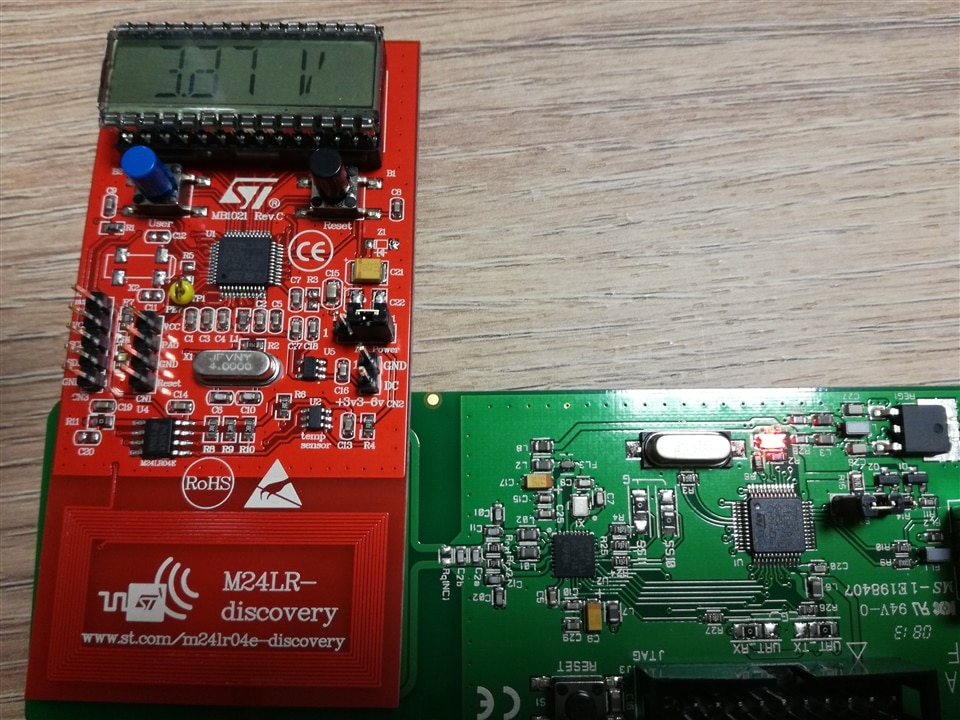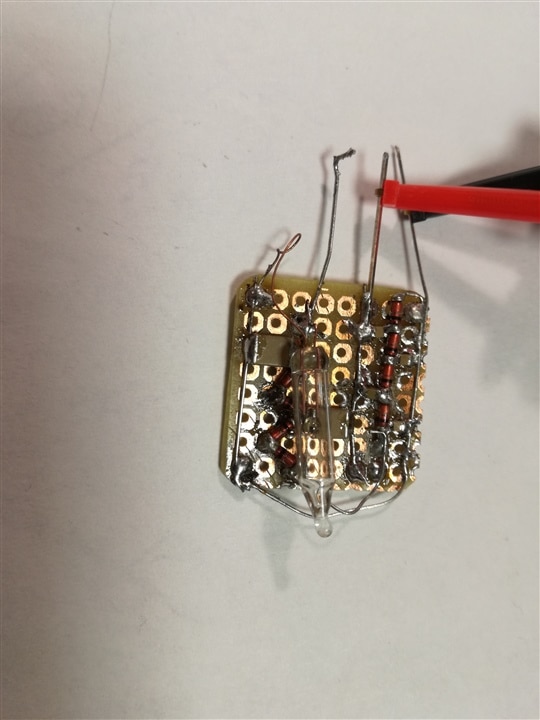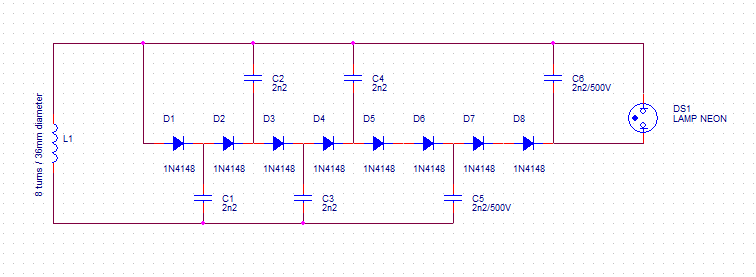Ever wondered how much power can you get from NFC reader? It seems - a lot!
For me, first indication of this fact was this Discovery series kit form ST:

As can be seen, reader is powering tag circuit containing MCU, LCD display and some sensors, generating about 3.3V.
Second indication was some draft version of ISO-10373-6 (Identification cards - Test methods - Part 6: Proximity Cards), where test case for checking reader field strength was circuit of full-wave Schottky rectifier connected to the antenna, which was supposed to generate about 3V on 1.8kOhm resistor - nice!
So - lets build something!
First test - antenna (about 8 turns of 0.3mm wire put inside plastic milk bottle cap - about 36mm diameter, ~4uH) - on photo below generating over 7V open-circuit through voltage doubling RF peak voltage probe:

Then some experiments using breadboard - not very repeatable because of capacitance coupling between contacts - to the level that about 1mA could be drawn when RF is connected not directly, but to the contact one row separated from the rest of circuit:

At this stage I was able to get several tens of volts open-circuit - so can we light a neon lamp?
Then first proper version was created (using RF modification of Dickson charge pump circuit):

This one was generating about 100V open-circuit - reverse voltage limit of 1N4148 diodes (previous pspice simulation hinted that better performance can be obtained from generic 1N4148 diodes than dedicated Schottky RF components - probably because of difference in their forward impedance) but still too low to reliably light a neon bulb (retrofitted from screwdriver type mains detector rated for 125V+ voltage - 230V+ types have neon lamps with higher startup voltage which limits sensitivity).
So - we need another multiplication stage. After brief experimenting with "ultrafast" high voltage rectifiers - still too slow it seems, third stage was build using 500V capacitors and series connected 1n4148 pairs:

This one is generating about 170V open-circuit and works like this:
And here is schematics:

Assuming that input power is low, there is no overvoltage protection nor neon lamp current limiter - can be added as needed...
Final observation is that we cannot tune generic detector for given resonance frequency (which would result in increased sensitivity), because this frequency varies - some readers work at 13.56MHz (eg. NFC reader in authors's mobile phone), but for example ST reader from discovery kit seems to work at about 2MHz, so circuit tuned to 13.56MHz (using 27pF capacitor connected in parallel with antenna), which nicely detects signal from mobile phone is not working with this reader. Detection can be obtained by removing fine-tuning capacitor (as seen on schematics above).
